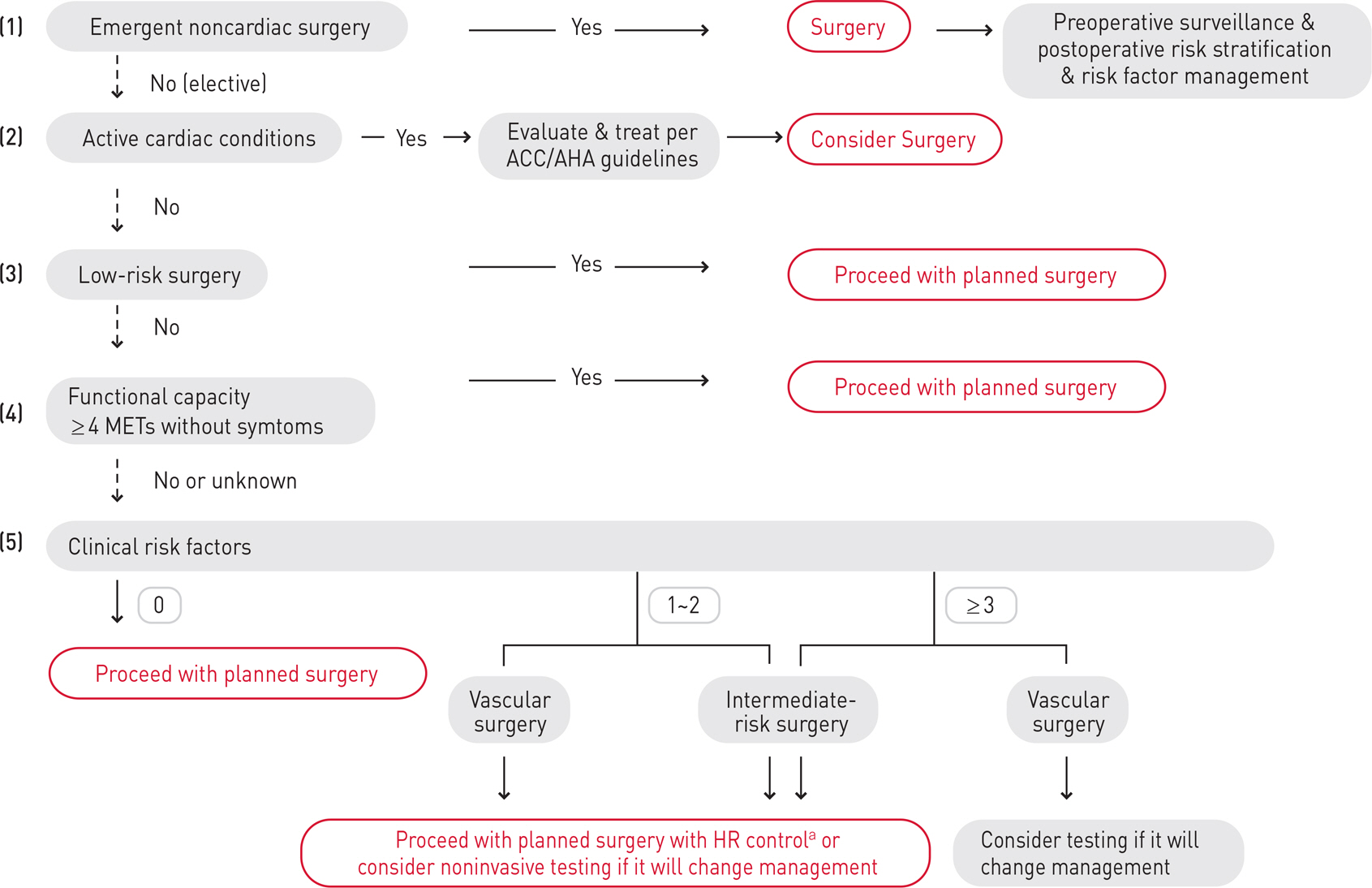J Korean Diabetes.
2011 Sep;12(3):142-146. 10.4093/jkd.2011.12.3.142.
Preoperative Assessment of Cardiac Risk in the Patient with Diabetes
- Affiliations
-
- 1Department of Medicine, Dongguk University IIsan Hospital, Dongguk University School of Medicine, Goyang, Korea. kyoung-ah.kim@dumc.or.kr
- KMID: 2059838
- DOI: http://doi.org/10.4093/jkd.2011.12.3.142
Abstract
- Approximately 50% of people with diabetes will at some point undergo surgery related to their disease. Since patients with diabetes mellitus are four times more likely to have silent ischemia and coronary artery disease compared to the risk of non-diabetic patients, they are at a higher risk for perioperative complications. Preoperative evaluation can identify many patients at increased risk of an adverse cardiac event, and appropriate perioperative management can reduce that risk. Although there is great potential to reduce perioperative cardiovascular risk, it is also impractical to perform cardiovascular testing prior to non-cardiac surgery in all patients. Therefore, it is important to determine perioperative risk and the appropriateness of cardiac testing and to provide prophylactic treatment to reduce risk. Perioperative cardiac risk stratification is determined by comorbidity, other cardiovascular risk factors, functional status, and type of surgery. By categorizing the cardiac risk, physicians can perform surgery in low risk patients without the need for cardiac testing. When preoperative risk assessment identifies intermediate- and high-risk patients, further cardiac testing might be warranted. This article reviews the perioperative evaluation of patients with diabetes with a clinical focus on cardiovascular risk.
MeSH Terms
Figure
Reference
-
1. Airaksinen KE. Silent coronary artery disease in diabetes–a feature of autonomic neuropathy or accelerated atherosclerosis? Diabetologia. 2001; 44:259–66.2. Gu W, Pagel PS, Warltier DC, Kersten JR. Modifying cardiovascular risk in diabetes mellitus. Anesthesiology. 2003; 98:774–9.
Article3. Rabbitts JA, Nuttall GA, Brown MJ, Hanson AC, Oliver WC, Holmes DR, Rihal CS. Cardiac risk of noncardiac surgery after percutaneous coronary intervention with drug-eluting stents. Anesthesiology. 2008; 109:596–604.
Article4. Fleisher LA, Beckman JA, Brown KA, Calkins H, Chaikof EL, Fleischmann KE, Freeman WK, Froehlich JB, Kasper EK, Kersten JR, Riegel B, Robb JF. 2009 ACCF/AHA focused update on perioperative beta blockade incorporated into the ACC/AHA 2007 guidelines on perioperative cardiovascular evaluation and care for noncardiac surgery: a report of the American college of cardiology foundation/American heart association task force on practice guidelines. Circulation. 2009; 120:e169–276.
Article5. Lee TH, Marcantonio ER, Mangione CM, Thomas EJ, Polanczyk CA, Cook EF, Sugarbaker DJ, Donaldson MC, Poss R, Ho KK, Ludwig LE, Pedan A, Goldman L. Derivation and prospective validation of a simple index for prediction of cardiac risk of major noncardiac surgery. Circulation. 1999; 100:1043–9.
Article6. Boersma E, Kertai MD, Schouten O, Bax JJ, Noordzij P, Steyerberg EW, Schinkel AF, van Santen M, Simoons ML, Thomson IR, Klein J, van Urk H, Poldermans D. Perioperative cardiovascular mortality in noncardiac surgery: validation of the Lee cardiac risk index. Am J Med. 2005; 118:1134–41.
Article7. Welten GM, Schouten O, van Domburg RT, Feringa HH, Hoeks SE, Dunkelgrün M, van Gestel YR, Goei D, Bax JJ, Poldermans D. The influence of aging on the prognostic value of the revised cardiac risk index for postoperative cardiac complications in vascular surgery patients. Eur J Vasc Endovasc Surg. 2007; 34:632–8.
Article
- Full Text Links
- Actions
-
Cited
- CITED
-
- Close
- Share
- Similar articles
-
- Preoperative cardiac evaluation with transthoracic echocardiography before non-cardiac surgery
- Cardiovascular Risk Assessment of Atherosclerotic Arterial Occlusive Diseases
- Anesthesia for Non-cardiac Surgery in the Patients with Cardiac Disease
- Diabetes Risk Score for Korean Adults
- Mitochondrial Dysfunction in Diabetic Cardiomyopathy


